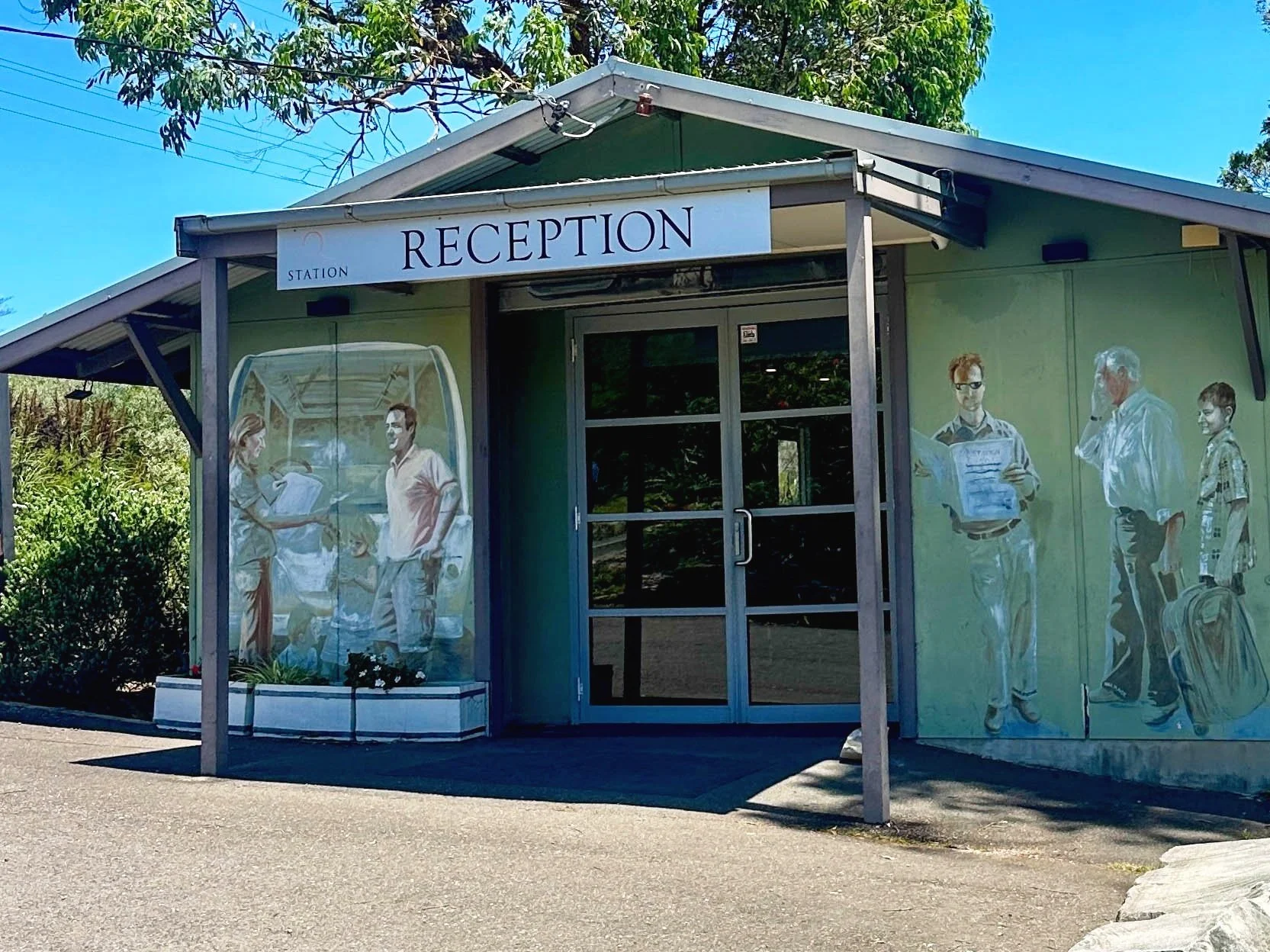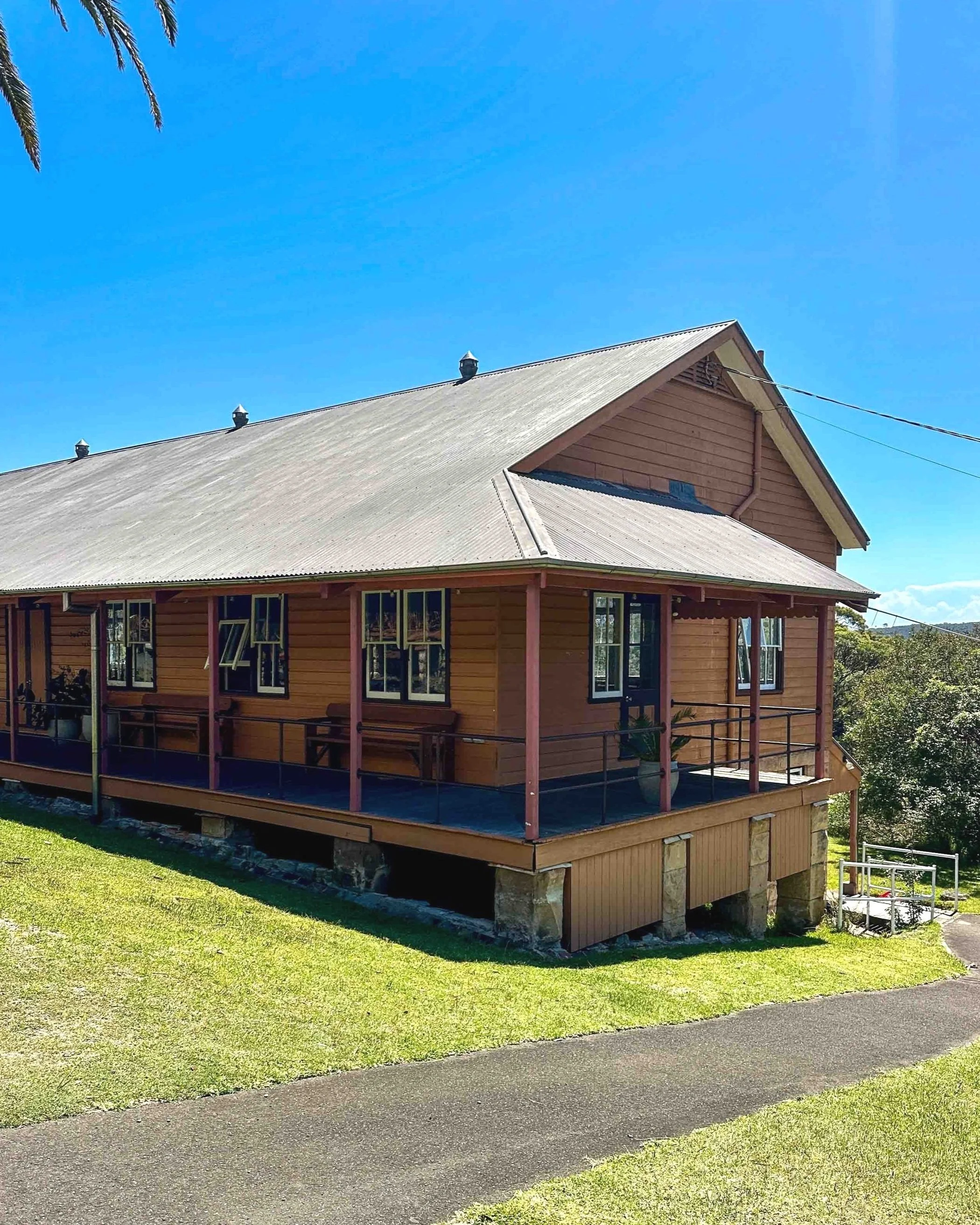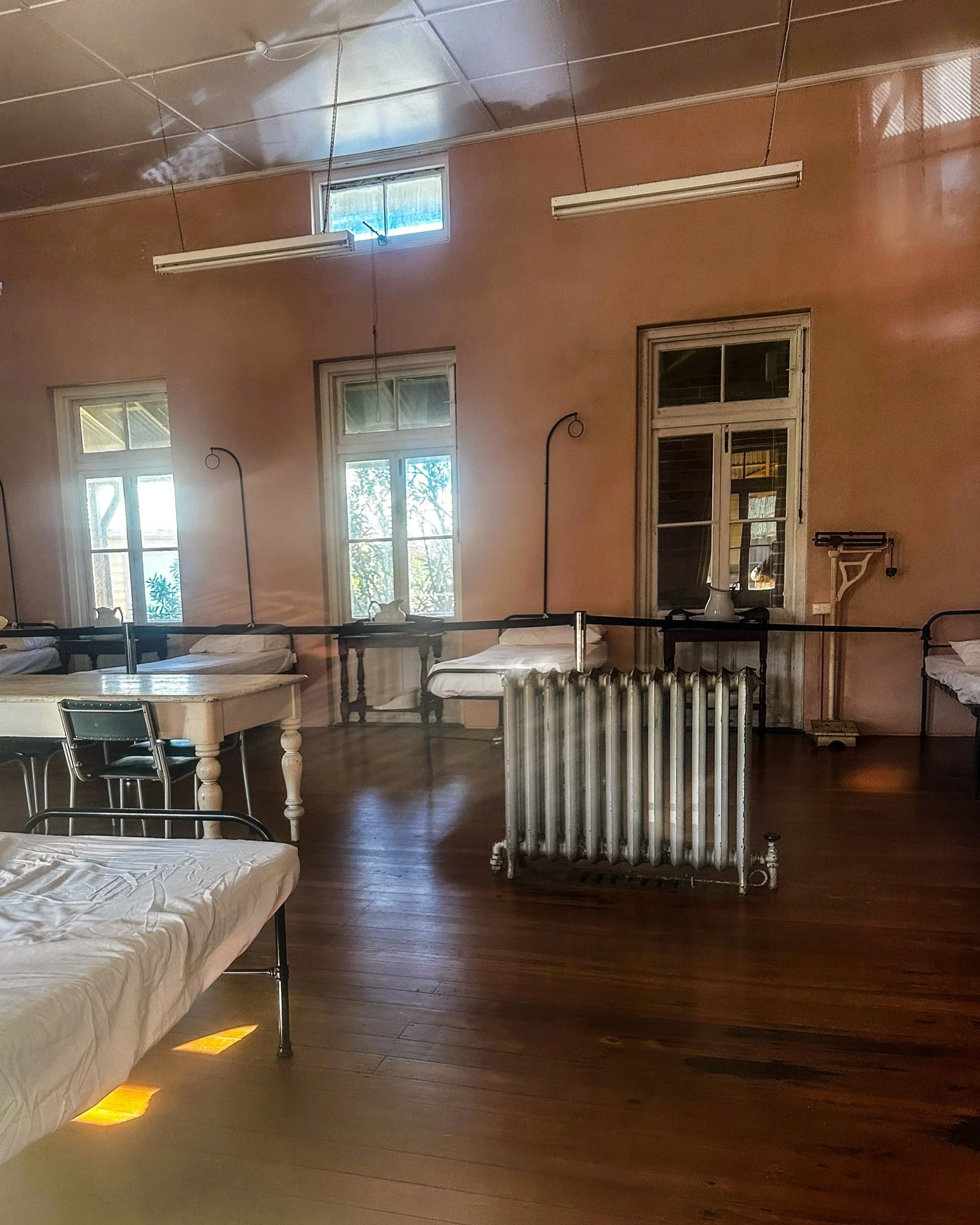The Q Station, Manly
The walk around the old Quarantine Station is not a long one. But with all there is to see and do, it may take some time.
I love this walk, either on its own or as an extension of the nearby North Head walk.
What is the Q Station?
The Q Station, is a heritage-listed former quarantine station with over 70 buildings spread across 33 hectares.
The Quarantine Station was established in 1832 to isolate those arriving by sea who were suspected of carrying contagious diseases, thereby protecting the wider population. In its 156 year history, over 1200 people passed through the Station.
The site now operates as a hotel, conference venue and event space. Most areas of the 33 hectare site are accessible to the public and tours of the station can be booked through the Visitor Centre.
Getting to the Quarantine Station
A free shuttle bus operates between Manly Wharf and the Q Station though the service is limited.* The Manly to North Head loop service will get you to the gates at the entrance to the Station then you’ll need to walk down to the car park and the start of the trail.
There is free parking near reception though it is limited and fills up quickly. Alternatively, you can leave your car in one of the (paid) parking areas at North Head and walk to the entrance.
The Trail
-
This walk explores the natural beauty and rich history of the old Quarantine Station at North Head, Manly
Distance 3km Time 2 hours
Level of Difficulty Easy -
Visitor Centre and Museum
Quarantine Beach
Wharf Quarter with cafes, bars and restaurant
Old Hospital Quarter
Organised and self-guided tours available
-
Go early to have the best chance to spot wildlife and to ensure you get a car park
Sunscreen and hat recommended as well as swimmers for the beach
NO DOGS
The walk begins at the car park where you’ll need to leave your vehicle and head to the Reception building. There’s no need to check in there unless you’re staying overnight.
Heading down hill, follow the path by the roadside. As you walk, be on the lookout for some of the many birds that populate the surrounding trees or if you’re very lucky, an echidna foraging in the undergrowth.
This bush-lined path soon opens up to reveal the many old quarantine buildings. Follow the trail down between the buildings to the steep staircase (formerly a funicular railway) that leads down to the foreshore buildings and Quarantine Beach.
After exploring the wharf area, maybe stopping for a coffee or a swim, head back up the hill past the inscriptions embedded in the walls and take the ramp up to follow Isolation Rd (or Hospital Road) to visit the Hospital precinct.
From there, Cottage Rd and Entrance Rd will take you back to the start, passing old administration buildings and accommodation cottages along the way.
Things to see & do at the Q Station
Take in the History
A walk around the grounds of the old Quarantine Station is a history lesson in itself. On many of the old buildings which once accommodated the sick and dying are signboards indicating their use in earlier times. The distinction between first, second and third class accommodation quarters here is interesting and speaks to the class distinctions of the time.








Something that caught my eye as I was walking up to the hospital quarter, were the inscriptions carved into the rock faces bearing names and messages to individuals. Around 600 people died of various diseases at the Quarantine Station and some of them are remembered here. The inscriptions are of varying quality and condition, some almost lost to the elements. And they are in many scripts and languages, including English, Greek, Arabic, Russian, Finnish and Chinese. **
A visit to the Quarantine Station Visitor Centre and Museum is a must of you want to learn more about the site’s history. Through historical exhibits and interactive displays, the museum’s collection explores the harsh realities of the passenger journey to Australia and the outbreaks of disease that resulted in their quarantine. It also reveals how medical staff cared for the sick and how communities were formed in this isolated place.
Museum displays also explore the significance of the area to the Aboriginal first inhabitants.as well as the flora and fauna that can be found on the site.
History tours of the grounds and facilities can be booked at The Visitor Centre as can After-Dark tours (or ghost tours as they’re known). The Q Station also offers a self-guided tour they call Quarantine Curiosities which can be downloaded here.






Eat, drink & play
The Visitors’ Centre is not just a museum. You can also hire kayaks, paddle boards and snorkel gear from here and there is a cafe attached with seating overlooking Quarantine Beach.
Also in the wharf precinct are the Engine Room Bar and the Boilerhouse Kitchen and Bar which has a happy hour and live music from 2-5pm on weekends. Up in the accommodation precinct is Views Restaurant, open to the public for breakfast only.
Other walks in the area
The Quarantine Station sits on North head and is part of the larger Sydney Harbour National Park. There are a number of other walking trails on North Head including the Fairfax Walk, a short trail with spectacular views.
If you’re feeling energetic, this walk can be combined with the Manly to North Head Walk where you can see the best of Manly visiting six beaches along the way.
Another great walk in the area, is the Spit Bridge to Manly walk. This 10km trail features some of Sydney's best harbour views and can be done in reverse if you’re setting out from Manly.
*The bus has seating for 11 so larger groups are advised to call ahead. Space is subject to availability. The shuttle runs infrequently so check timetable when planning your visit.
**Stories from the Sandstone by Peter Hobbins, Ursula Frederick and Annie Clarke, documents and unravels some of the stories behind the hundreds of engravings carved into the rocks and walls.
















